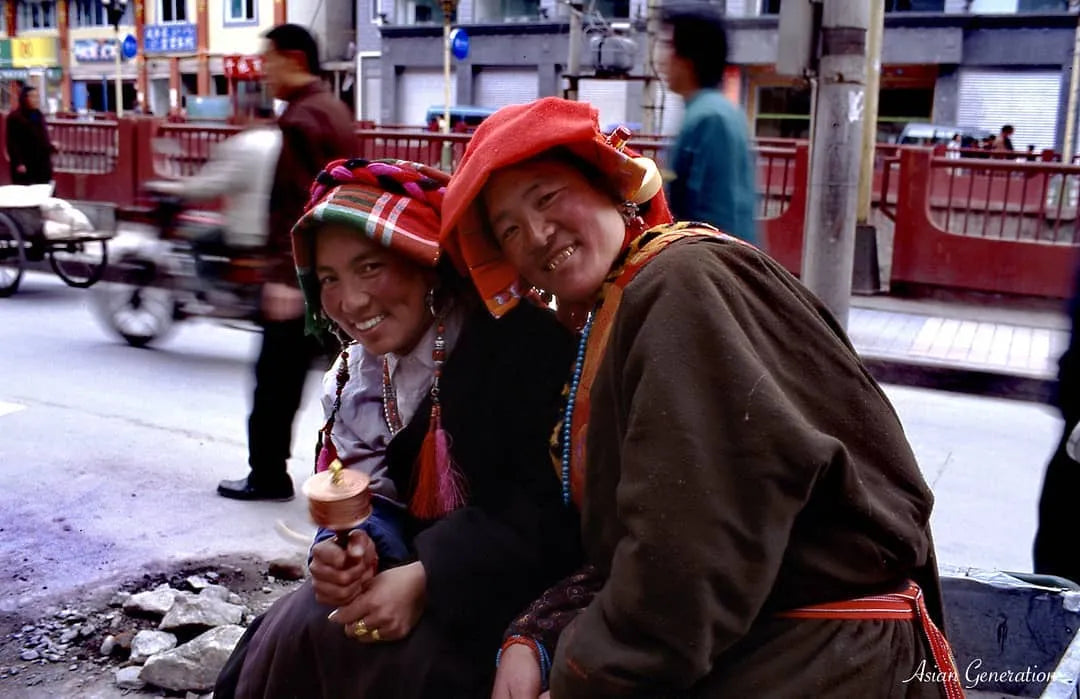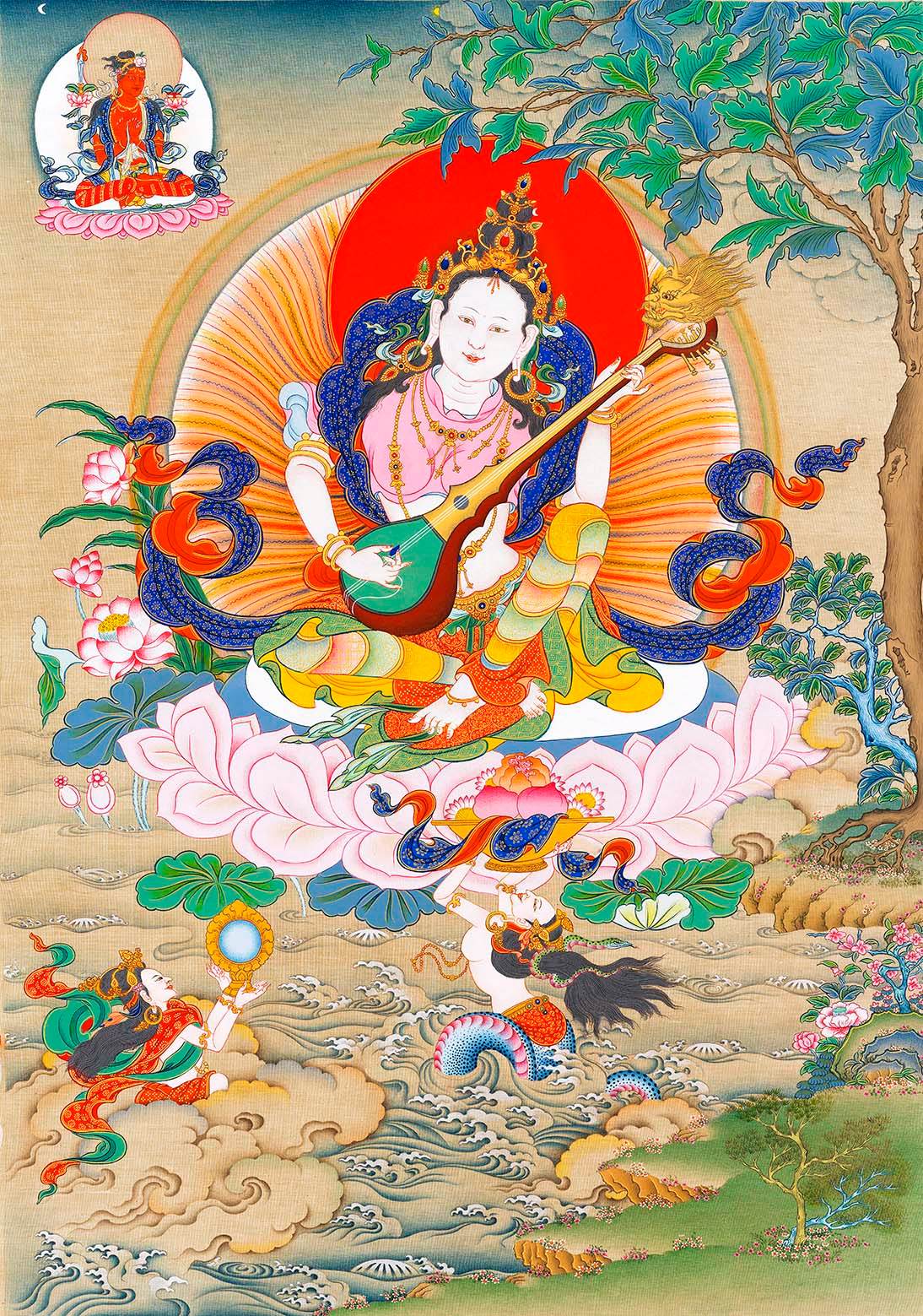
On the Plateau, What Does a Smile Convey?








Photography: Tetsuya Ishida
Image source: Photographer's personal media
Instagram: tetsuya.ishida.140
More works available.
Expressions of Tibet
The writer I adore once said, in the Tibetan area, a smile can often express much more.
Thinking back on my numerous beautiful encounters during my travels in the Tibetan region: meeting a wise old man with white beard on the way to Sangye Temple at dawn; a shy young boy picking cow dung with his father on the prairie in Heimahe Town under the setting sun; two sisters guiding me on the way to Zhebeng Temple; a young monk holding a flower pot walking towards me at Labrang Monastery in Xiahe; and a local pilgrim at Songzanlin Monastery with whom I could only communicate through gestures.

At the moment of encounter, they almost always responded with an instinctive, untainted smile—a wholehearted welcome and kindness to a traveler from afar. Such warm and pure moments needed no words; language felt redundant in the face of such sincerity.
In Tibet, all beautiful emotions and intentions are habitually conveyed through a smile: friendliness, curiosity, humility, shyness, admiration, appreciation... These expressions share the same essence as the vast blue sky, the blazing sun, the open lakes, and the sacred snow lotus. Countless photographers, both domestic and international, have visited this pure land of snow, capturing these radiant and transparent expressions through their lenses. Among them, my favorite photographer, Tetsuya Ishida, is one.

Encounter with the Photographer
By chance, one day I came across the Himalayan travel photography of Japanese photographer Tetsuya Ishida online.
I was deeply drawn to his series of flowing light and shadow, captivated by the delicate yet highly distinctive beauty and emotion within them. Out of curiosity, I tried searching for more information about him beyond his works. However, the results only led me to the famous painter Tetsuya Ishida. It turned out that two artists working in different fields shared the same name. Compared to the renowned painter, the photographer Tetsuya Ishida was almost entirely overshadowed by the former's artistic brilliance.

Regardless, when a photograph is completed and exists as an independent entity, its connection to the photographer's fame or titles no longer matters. What truly matters is that a stranger's heart is deeply moved the moment it encounters these images.

Beauty and emotion, crystallized in the form of a photograph from the moment they are framed, detach from the photographer and begin their own independent journey in the world, awaiting encounters with those destined to meet them. I am one of them.

Paradise in Memory
Tetsuya Ishida's footprints spanned across Asia, with a particular affinity for countries and cultures rich in religious history and faith. Myanmar, Thailand, Bhutan, Tibet—he traveled and photographed, driven purely by passion, indifferent to gain or loss. His journey was so sincere, so pure, brimming with curiosity about the world and a fiery zest for life.
It was the radiant smiles of children and the vivid, abundant details of daily life in the snow-capped highlands from his Tibet series that moved me deeply.

Those photographs seem to possess a mysterious power—the moment the viewer's gaze lingers on the image, their consciousness is transported to a distant yet tender place.
That place might belong to a dream from bygone years, a past life, or an unconscious reverie on an afternoon. In any case, it feels familiar, as if we shared the exact same experiences as the people in the frames—or perhaps we were even the very subjects encountered and captured by the photographer during an unplanned journey.

I recall a passage by Japanese photographer Daido Moriyama about travel.
He said, "Rather, travel is precisely about casting the burdens weighing on my life—pushed to their limits—into unknown time and space, then seeking the awakening of new self-awareness through countless encounters. It is through the resonance between the memories within me, shaped by past experiences, and the memories born from anticipating the future, that I discover and foresee another self not usually conscious in daily life. One practical form of this act of discovery is travel."


Amidst the mountains and fields, existing as one with all things under heaven.
Travel is always inseparable from photography. And photography seems to be a journey of verification—verifying memories while also verifying the self. The ultimate completion of identity relies on traversing thousands of miles, body and soul. Every encounter along the way becomes fragmented yet profound markers, guiding us to recognize and retrieve the faint, distant traces of ourselves left behind in past lives.


The childhood we all once had.
A significant portion of Tetsuya Ishida's photography captures children and their carefree childhood moments. The other part documents the religious and secular life of the highlands.
Faced with these innocent smiles, I wonder—does his heart still quietly, delicately preserve a unique tenderness for those distant childhood days? Does he hold a deep, refined nostalgia and reverence for the slow rhythms of the past and the warmth of human connections steeped within them?



Things of purity and divinity are:
blooming flowers, the face of a Buddha statue,
a child's smile, the light of the sun and moon.
I marvel at how these moving records have almost never been compiled into publications. Rarely have they been crowned with dazzling awards or crowded exhibitions to promote them. Yet perhaps it is precisely this anonymity that allows these quietly beautiful works to retain their freedom, purity, and intimacy.
Like an orchid hidden in an empty valley—no crowds flock to admire it, yet any traveler who happens upon it even once can never forget its breathtaking beauty.




What kind of inner world do little children possess?
Give the camera to a poet.
I recall Chilean photographer Sergio Larrain saying: "You can spend years training a photographer, but it’s better to just hand the camera to a poet."




A time that feels familiar.
If a person's soul is barren—lacking keen senses and awareness, devoid of sincerity and sentiment, without love or compassion for the world and all its natural wonders, with no inner space reserved for poetry and distant horizons—then even photos taken with sophisticated, expensive equipment, boasting flawless composition and dazzling colors, may still be in vain.
Even if the image appears impeccable, the photograph remains hollow, soulless. Such photography has form but no emotional warmth, offering no glimpse into a human heart. And so, it holds no life, radiating no energy to be felt.

The life of a photograph means the story within the frozen frame has not ended. Nor did the story begin only when the photographer noticed it—it exists as an intermediate moment in an ongoing continuum.
Like a segment of a river. Before that segment, the river was flowing; after it, the river still flows. The story in the photograph continues to unfold day after day, advancing, playing out. Life and time stretch endlessly this way. Only now, the story has shifted from physical space into the viewer's heart.

Every photograph by Tetsuya Ishida possesses such power. Gazing at these images, I can still vividly hear the bright laughter of children chasing each other, the bustling sounds of lively streets, the idle chatter in sweet tea houses on afternoons, and the divine murmurs of scripture recitations in temple halls...
All these voices spill endlessly through the thin surface of a photograph, and every scene begins to move before the eyes like images on a screen, guiding the viewer through one miraculous corridor of time and space after another.


Corners Forgotten by Time.
His photography always reminds me of the slow, distant past—of emotional warmth, brightness, purity, and tranquility. Time seems to have halted within these vibrant, lifelike frames. It is a corner tenderly forgotten by time. Here, the clock's hands have been turned back decades.



Hometown is the place you can never return to.
Back then, life still moved with pious, ancient faith and tradition—undisturbed, serene. Children's childhoods stretched long, their carefree days seeming endless. Nature still stepped with calm, graceful strides through each sunrise and sunset. Nothing had yet been swept away by the smog-choked tide of materialism at breakneck speed.
People immersed themselves wholeheartedly in the grounded, natural rhythm of living—free of distraction, untouched by anxiety.

A cup of sweet tea in leisure, time flowing slowly by.
Once in a lifetime encounter.
Tetsuya Ishida's photography clearly has nothing to do with meticulous planning or polished technique. Each image seems so random and natural, even revealing a kind of unrefined warmth and simplicity.
His work is not about exoticism, nor does it deliberately showcase beauty from a foreign culture. The beauty in these frames is a naturally flowing state—an accidental encounter, a once-in-a-lifetime moment, born of serendipity rather than performance. Whether before or after the shot, the pure, real-life scenes he captures always maintain a naturally ordered state, radiating their inherent dignity and vitality.

Photographer Yang Yankang, whom I admire, said in an interview that photography should not be about obtaining a photo from a distance for utilitarian purposes, but should be about integrating into life.
Clearly, Ishida Toru's photography also involves naturally capturing moments from life. He doesn't make me feel like he is an outsider, with an outsider's mindset and perspective. On the contrary, he always seems to be part of the place, as if it were his hometown, in this life or a past one.

Photography is the mirror-like projection and correspondence of a sensitive heart in the material world. It is not that the photographer accidentally captures beauty and emotion with a machine, but that beauty and emotion already reside within the photographer's heart. The moment they meet, the feeling is like reuniting with an old friend, as if retrieving a cherished memory from bygone days.

In Tetsuya Ishida's photography, life unfolds with such joy and ease, the expressions on people's faces so healthy, bright, and natural. Everything arises in perfect harmony, just as it is meant to be. It brings to mind Hellinger's poem, *I Allow*. The poet says: *I know I came to experience life in the present moment. In each now, the only thing I must do is fully allow, fully experience, fully enjoy. To see, just to see. To let everything be as it is.*
This is the "Shangri-La" photographer Tetsuya Ishida presents to us.









1 comment
Wonderful goods from you, man. I have be aware your stuff previous to and you are simply too excellent. I really like what you have got here, really like what you’re saying and the way by which you say it. You are making it entertaining and you continue to take care of to keep it sensible. I can’t wait to read far more from you. That is really a great web site.